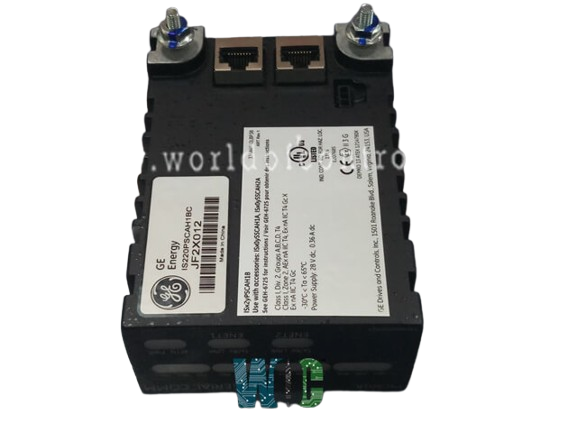
World Of Controls understands the criticality of your requirement and works towards reducing the lead time as much as possible.
IS220PSCAH1BC - Serial Communication I/O Module is available in stock which ships the same day.
IS220PSCAH1BC - Serial Communication I/O Module comes in UNUSED as well as REBUILT condition.
To avail our best deals for IS220PSCAH1BC - Serial Communication I/O Module, contact us and we will get back to you within 24 hours.
SPECIFICATIONS:
Part Number: IS220PSCAH1BC
Manufacturer: General Electric
Series: Mark VIe
Number of Channels: 6
Field Wiring: 24 AWG min
Frame rate: 32 Hz
Product Type: Serial Communication I/O Module
Mounting: DIN Rail
Operating Temperature: -40 to 70 ° C
Storage Temperature: -40 to 85 ° C
Weight: 0.8kg
Module Dimension: 17.0 x 15.7 x 15.3 cm
Availability: In Stock
Product of Origin: United States
Manual: GEI-100868
FUNCTIONAL DESCRIPTION:
IS220PSCAH1BC is a Serial Communication I/O Module manufactured and designed by General Electric as part of the Mark VIe Series used in distributed control systems. The Serial Communication I/O pack serves as the interface between one or two I/O Ethernet networks and a serial communications terminal board. It includes a BPPC processor board, which is standard across all Mark VIe distributed I/O packs and a serial communications board. The communications board features six serial transceiver channels that can be individually configured for RS-232, RS-422, or RS-485 half-duplex standards. The I/O pack has dual RJ-45 Ethernet connectors for input and 3-pin power input, while its output is via a DC-62 pin connector that links directly to the terminal board. One Ethernet port can also support Ethernet Modbus communication on Simplex networks. LED indicators provide visual diagnostics, and the pack's BPPC processor is compatible with ControlST version V04.07 and higher.
INSTALLATION:
DATAFLOW FROM PSCA TO CONTROLLER:
WOC has the largest stock of OEM replacement parts for GE Distributed Control Systems. We can also repair your faulty boards and supply unused and rebuilt boards backed up with a warranty. Our team of experts is available round the clock to support your OEM needs. Our team of experts at WOC is happy to assist you with any of your automation requirements. For pricing and availability on parts and repairs, kindly contact our team by phone or email.
What is a Serial Communication I/O module?
A Serial Communication I/O module is a device that facilitates serial communication between a computer or controller and external devices. It typically provides serial ports (such as RS-232, RS-485, or UART) for data transmission.
What are the common applications of Serial Communication I/O modules?
Serial Communication I/O modules are used in various applications, including industrial automation, data acquisition, embedded systems, robotics, and IoT (Internet of Things) devices. They enable connectivity with sensors, actuators, displays, and other peripherals.
What types of serial interfaces do these modules support?
Serial Communication I/O modules commonly support RS-232, RS-485, UART (Universal Asynchronous Receiver-Transmitter), SPI (Serial Peripheral Interface), and I2C (Inter-Integrated Circuit) interfaces. The specific interface types vary depending on the module.